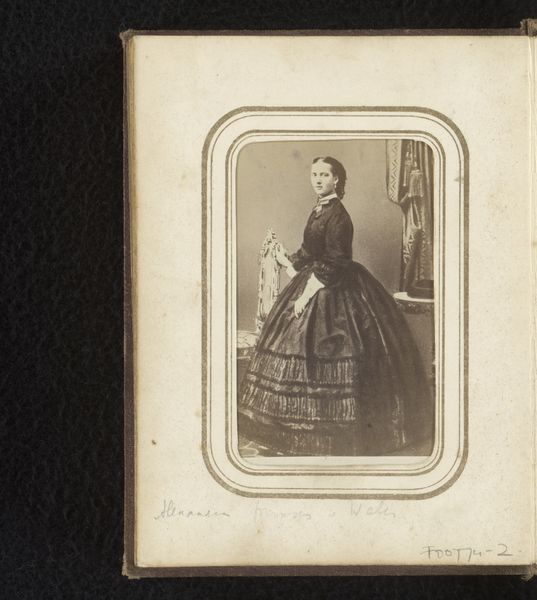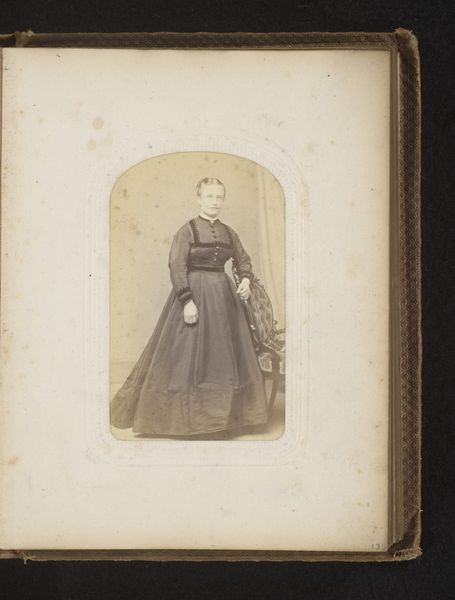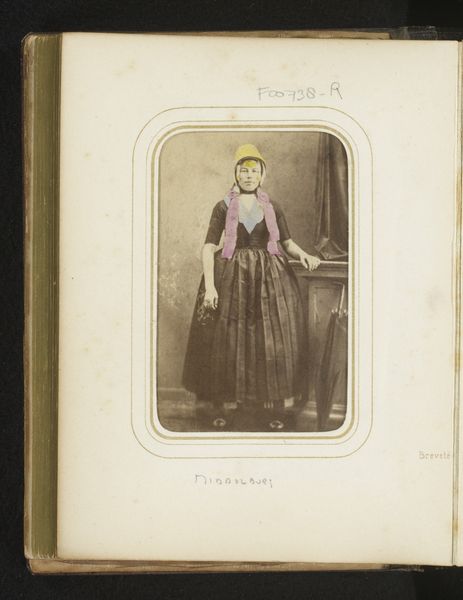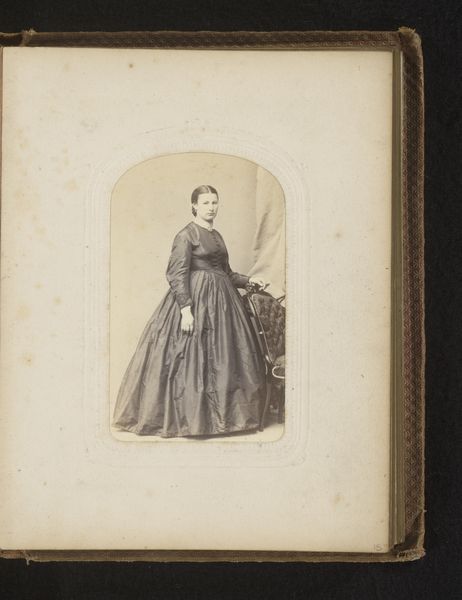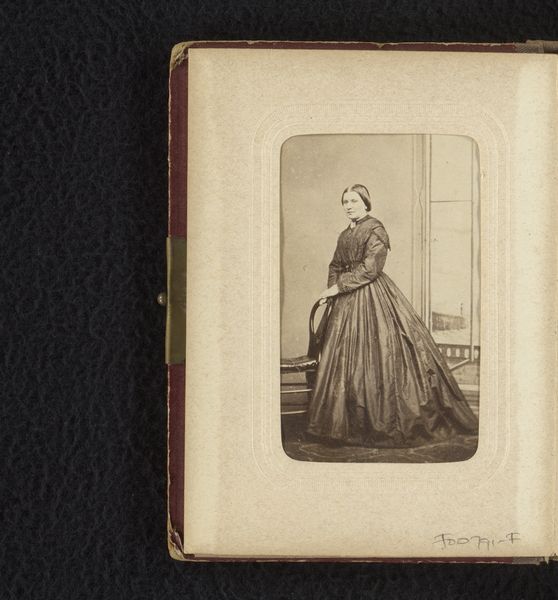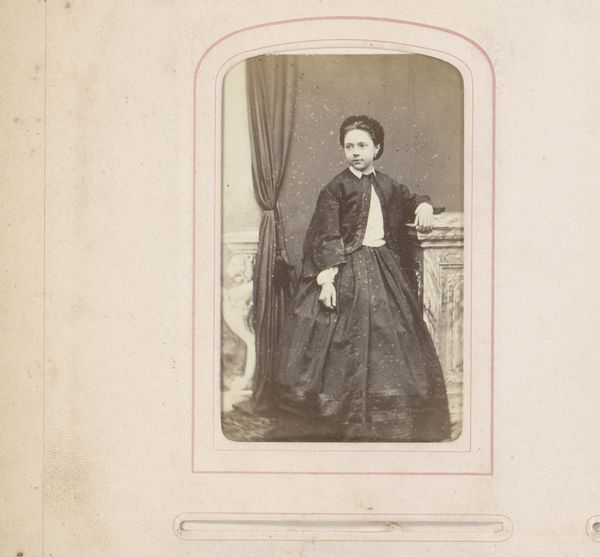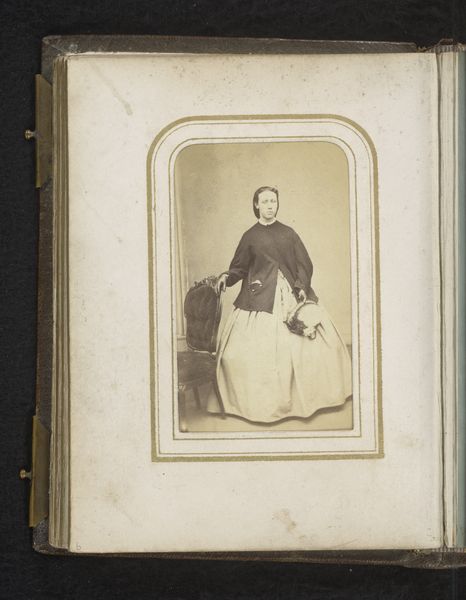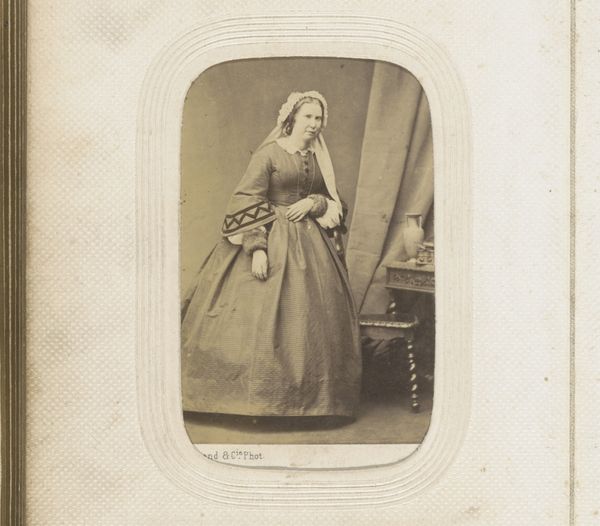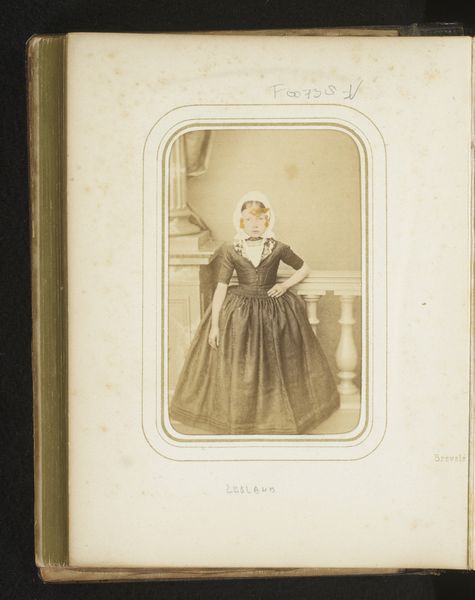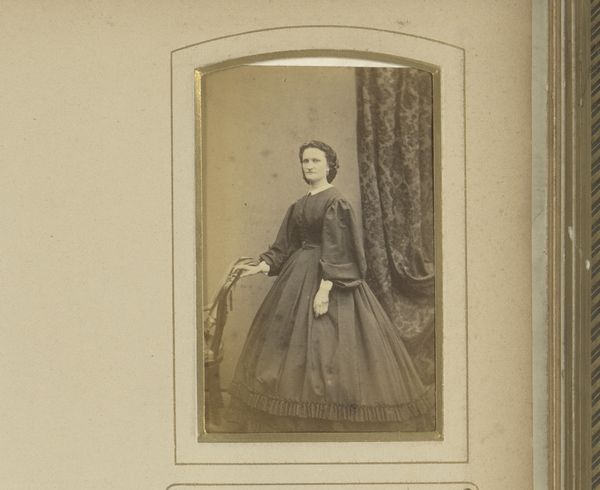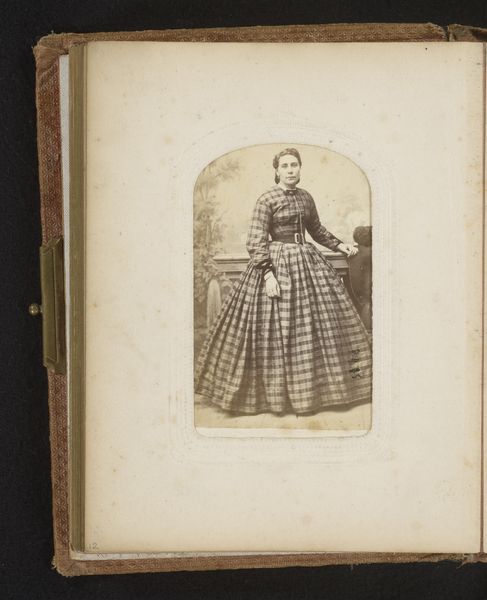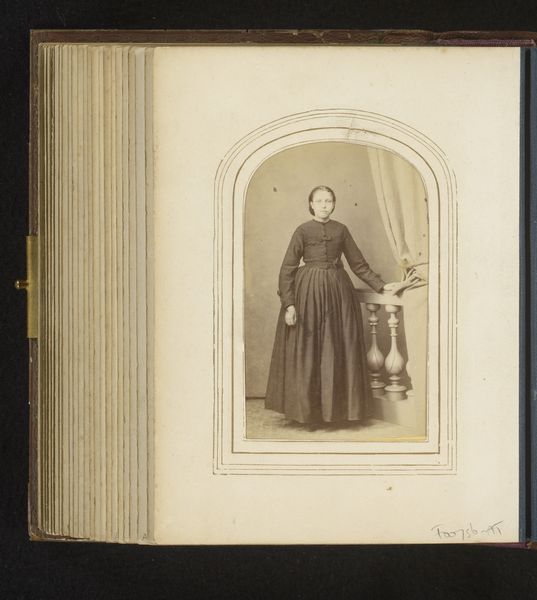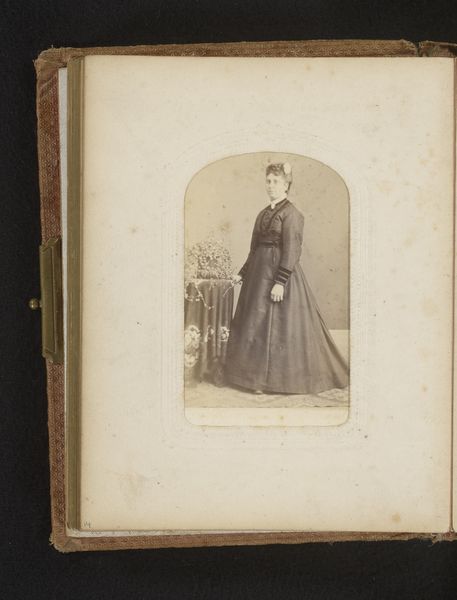
Portret van een vrouw in klederdracht van Nieuwland, Zeeland 1860 - 1890
0:00
0:00
andriesjager
Rijksmuseum
photography
#
portrait
#
16_19th-century
#
photography
#
coloured pencil
#
genre-painting
#
realism
Dimensions: height 85 mm, width 53 mm
Copyright: Rijks Museum: Open Domain
Editor: Here we have "Portrait of a Woman in Traditional Costume from Nieuwland, Zeeland," taken between 1860 and 1890, and attributed to Andries Jager. It looks like a photograph, possibly hand-tinted, mounted in an album. I'm immediately drawn to the stark contrast between the vibrant floral collar and the somber dress. What can you tell me about this piece? Curator: I find this image fascinating in its demonstration of early photographic practices and the commodification of culture. Let's consider the material conditions of its production. This isn't simply a portrait, but a product made for circulation and consumption. Notice the photograph is part of an album, suggesting mass production rather than a unique art object. Editor: So it's less about artistic expression and more about… documenting, or even selling, a specific cultural image? Curator: Precisely! The photograph’s material form is the message. Think about the labor involved – from the photographer setting up the shot and developing the image, to the hand-tinting that likely enhanced the perceived exoticism of the subject for consumers. Consider the socio-economic implications – who could afford such an item? And what did it mean to "own" this image of a woman and her traditional dress? Editor: So, instead of looking for symbolism or artistic intent, you're asking about the process and the social forces at play in making and distributing this image. Curator: Absolutely. The focus is on production, consumption, and the cultural power dynamics inherent in representing and packaging this woman's identity for public consumption. Editor: I never considered photography through that lens. It’s so easy to get caught up in the image itself, rather than how it was made and who it was made for. Curator: Seeing art as a product of specific labor and social contexts opens up a whole new way of understanding its meaning and value.
Comments
No comments
Be the first to comment and join the conversation on the ultimate creative platform.

